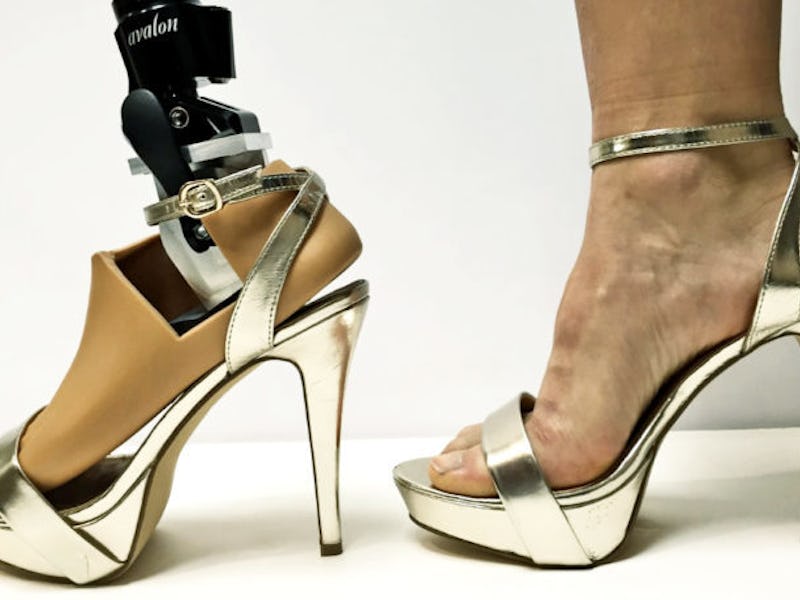University Students Design a Prosthetic Exclusively for High Heels
Everyone deserves to look and feel fabulous. This team of students has created a new way to make sure that happens.

Technology has helped create amazing solutions for people who live with prosthetic limbs. While the lifestyle itself is a choice, it still comes with its limits, and those roadblocks can exist anywhere between actual functionality and everyday fashion. Now, a group of students from Johns Hopkins University are seeking to add just a little more fun to the experience for any prosthetic owner who still wishes to rock the Brazilian stomp.
Announced today in a press release, the “Prominence” is a prosthetic foot made specifically for wearing high heels. The model features an adjustable ankle, and the release claimed that the foot adjusts to any heel height. The students’ project report for the university’s Whiting School of Engineering stated that the prosthetic was made with ex-military servicewomen in mind. They noted that roughly 2,100 women have lost a leg or foot during military service, and with an increasing number of women entering combat, the group seeks to keep life as normal as possible for returning wounded soldiers. “For female veterans of the U.S. armed services with lower limb amputations, that seemingly innocuous, but so pervasive, and decidedly feminine part of their lives is gone,” the group said in their report.
The task itself was a little harder said than done. “The human foot took thousands of years of evolution to get this way,” said team member Luke Brown. “We have one year to match it.” The group spent two semesters’ worth of trial and error before reaching the results they had hoped for. They ran tests using four types on womens’ shoes on 7 test subjects — 3 amputees and 4 non-amputees wearing attachments — before they were satisfied. “It felt stable,” said Alexandra Capellini, a Johns Hopkins University junior who lost her right leg to bone cancer as a child. “An adjustable ankle is useful in contexts even beyond high heels. Ballet flats, sneakers, boots, and high heels especially, all vary in height, so an adjustable ankle opens up opportunities to wear a variety of shoes.”
While the research and statement are primarily aimed at women, anyone can rock a good heel, so don’t let the aim deter you. Regardless, seeing this kind of personalized work going into prosthetic development will hopefully help combat the stigmas that still plague those who have lost limbs.